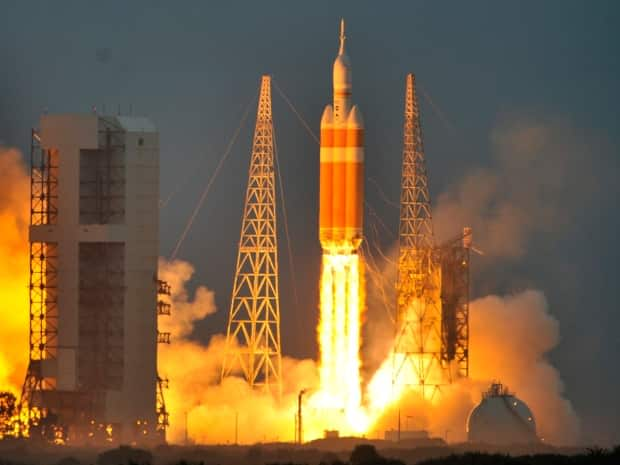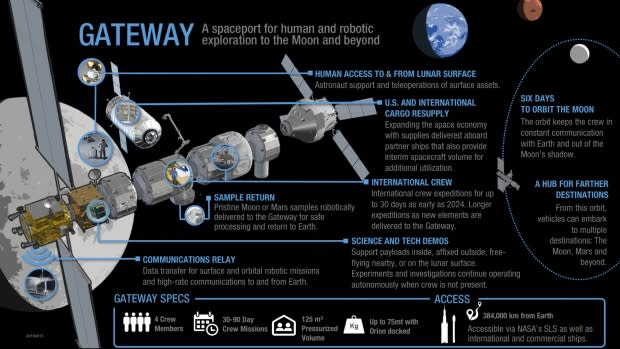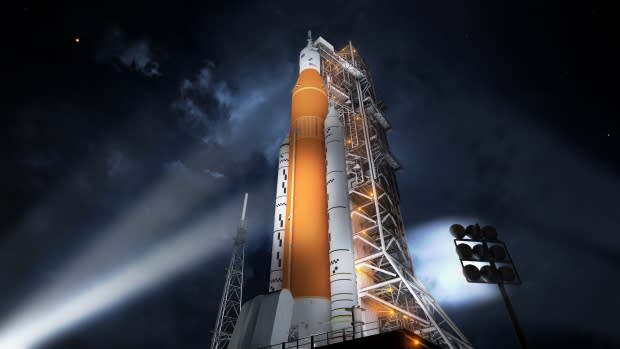NASA's latest bid to return to the moon by 2024 may be a bit unrealistic, experts say

This story is part of Moon Landing: 50th Anniversary, a series from CBC News examining how far we've come since the first humans landed on the moon.
On Dec. 14, 1972, NASA astronaut Eugene Cernan lifted his foot from the dusty lunar surface one final time. For nearly 47 years, that footprint has remained untouched; unweathered by wind or rain. Or humans.
But, if you believe NASA's recent announcement, in five years, the next man and first woman will be visiting the moon as part of the Artemis program. And this time, NASA said, there will be permanent human presence.
However, some are questioning whether the plan is realistic — and with good reason.
It took a mere eight years from U.S. President John F. Kennedy's 1961 declaration to send humans to the moon by the end of the decade to the July 20, 1969 lunar landing.
NASA has been talking about a return for almost two decades, with plans and programs, like Constellation, being cut, or serious delays, as with its next generation heavy lift rocket, the Space Launch System (SLS).
But over the past decade, there's been a lot more forward movement in getting back to the moon, and beyond, to Mars.
Watch as Eugene Cernan, the last man to walk on the moon, sings as he works:
Directives
In the early 2000s, NASA talked about returning to the moon by 2020 using a new crewed spacecraft as part of the Constellation program. This would also include the Orion Multi-Purpose Crew Vehicle.
But in 2011, U.S. President Barack Obama concluded that a crewed mission to the moon or Mars was beyond NASA's budget. Constellation was modified, and NASA was to provide a new SLS, with Orion still moving onwards.
Most recently, NASA — as well as partner countries including Canada — has announced bigger plans. It has proposed the Lunar Gateway, an orbiting space station lying between Earth and the moon, that would be a type of jumping off point for astronauts heading to the moon, Mars or even to a far-off asteroid.
These are all encouraging signs, said Jesse Rogerson, science advisor at the Canada Aviation and Space Museum in Ottawa.
"When they started SLS and Orion a decade ago, there was no real reason for it, other than 'I think we're going to need this,'" said Rogerson. "Now NASA has this Space Policy Directive 1; it has this Lunar Gateway plan; it has other countries signed on … I think this might be a driver for SLS to hit some deadlines."

But, Rogerson adds, while they've committed to companies — such as Maxar who will be building the power propulsion element for the Lunar Gateway, the station's main component — it's a tough goal to meet with the timeline NASA has set out.
The timeline on NASA'S Explore: Moon to Mars site claims that commercial moon deliveries will commence in 2019, with Artemis 1 launching to lunar orbit by 2020. That's not a lot of time since the March announcement by U.S. Vice-President Mike Pence.
"They've taken steps for this, but for any company to build a space-worthy anything in six months, that's a tight deadline," Rogerson said. "It's probably going to be next year."
And, while NASA might be able to fall behind schedule, for companies whose financial stability rely on meeting contract deadlines, it's not that easy.
"They have a bit of wiggle room, but not much," he said. "Those are the ones I'm more worried about."

Time and money
Chris Gainor, a NASA historian and president of the Royal Astronomical Society of Canada, also has doubts.
"I'll believe when I see it," he said of the 2024 moon mission deadline.
While intentions may be sincere, he said, it's difficult to adhere to a long-term strategy when the administration in Washington risks changing every four years. And it's even tougher when the U.S. president waffles on his own plans.
WATCH: How Canada is involved in humanity's race back to the moon
Just two-and-a-half months after Pence announced 2024 as the new target date for a return to the moon — pushed up from 2028 — and just 11 days after NASA administrator Jim Bridenstine announced the official Artemis program, U.S. President Donald Trump tweeted, "For all of the money we are spending, NASA should NOT be talking about going to the Moon - We did that 50 years ago. They should be focused on the much bigger things we are doing, including Mars (of which the Moon is a part), Defense and Science!"
And then there's the cost.
Erin Gregory, assistant curator at the Canada Aviation and Space Museum, said the biggest stumbling block may be money.
The entire Apollo program is estimated to have cost $25 billion US, or more than $280 billion when adjusted for inflation.
"That's insane," Gregory said. "And nobody would vote for that today,"
Canada's future
The most iconic feature in Canada's space history is, no doubt, the Canadarm. It literally built the International Space Station, and continues — alongside Dextre, another type of robotic tool — to play a vital role in station operations, including catching cargo resupply missions, spacewalks and repairs.
And last February, Prime Minister Justin Trudeau announced that Canada has committed to participate in the Lunar Gateway program, with one of the contributions being Canadarm3.

But with NASA moving the date up four years to get astronauts to the moon, it throws a bit of a wrench in that plan.
In a call with SpaceQ, a Canadian-focused space industry site, Bill Gerstenmaier, associate administrator of NASA's Human Exploration and Operations Mission Directorate told editor Marc Boucher that the arm wasn't critical for the lunar landing, though NASA was still expecting it as part of the platform.
While there is skepticism that we'll reach the moon in 2024, there's also optimism that it's on the books once again.
"I think it's all going to happen," 64-year-old Gainor said."But even if I live to a ripe old age, I'm not sure I'm going to see it."



